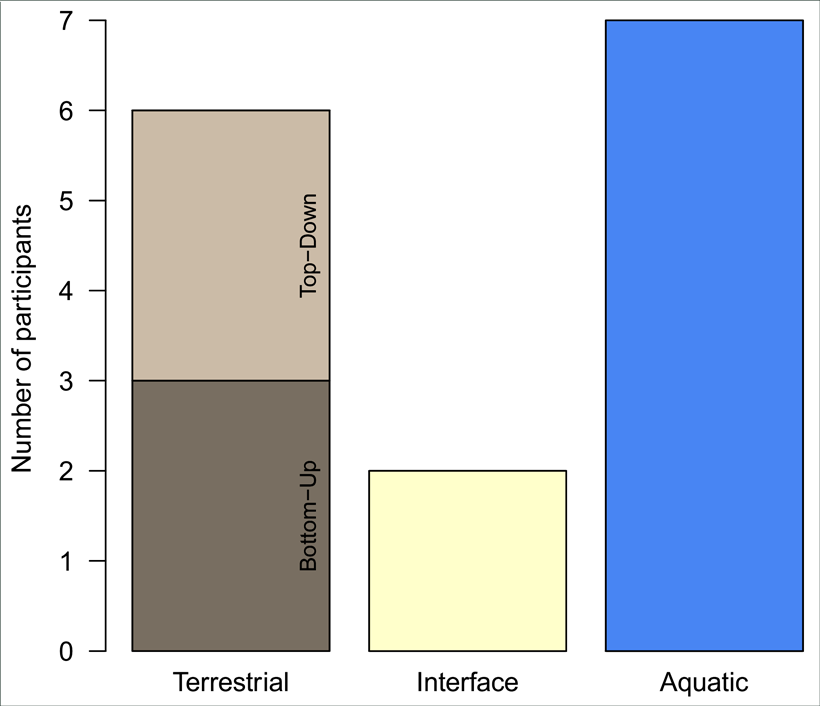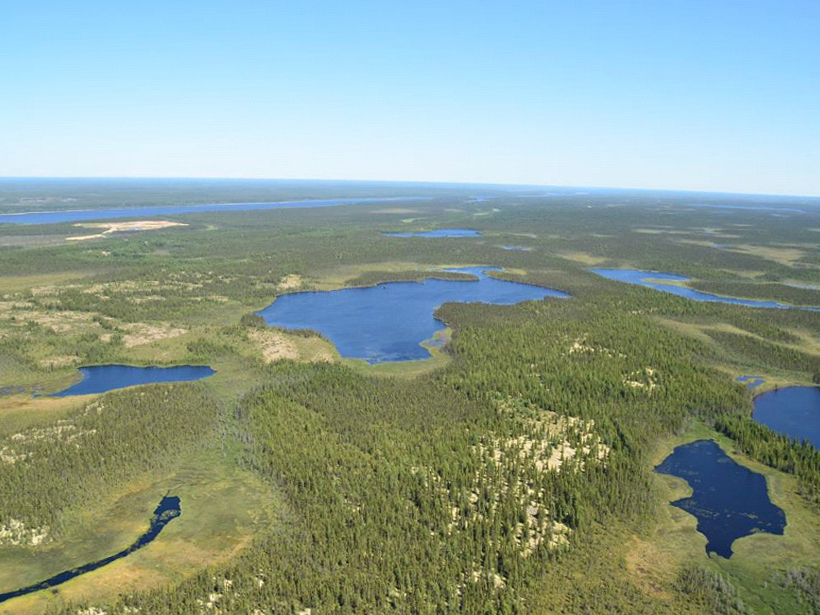Developing effective strategies to mitigate global warming elicits an urgent need to understand and accurately quantify carbon exchange among the atmosphere, continents, and oceans. Last May, 15 scientists from different disciplines gathered in Montreal to discuss how best to integrate carbon fluxes in aquatic and terrestrial ecosystems into regional and global carbon budgets.

Land-atmosphere carbon exchange is among the most uncertain components of the global carbon cycle. The reason for this is that continental landscapes are made up of a heterogeneous mosaic of elements like forests, wetlands, inland waters, and other environments that each have their own ecosystem properties and processes. This complexity has led to conceptual compartmentalization in landscape carbon budgets, where each landscape element is treated independently of the others.
In nature, however, terrestrial and aquatic elements of the landscape are interconnected and dependent on each other. Thus, the current compartmentalized perspective misses integral aspects of the structure and functioning of the landscape and therefore poses a risk of biased estimates of land-atmosphere carbon exchange when such estimates are based on terrestrial biosphere models or carbon inventory changes.
Acknowledging Ecosystems’ Interconnectivity
Current frameworks do well at representing the different landscape elements that contribute to carbon exchange, yet the frameworks mostly neglect the elements’ interdependence.
Workshop discussions revolved around a central question: Do existing carbon exchange frameworks effectively capture the heterogeneous nature of the landscape and the hydrological connectivity between landscape elements? The participants reached the conclusion that current frameworks do well at representing the different landscape elements that contribute to carbon exchange, yet the frameworks mostly neglect the elements’ interdependence.
In particular, whereas regional assessments of land-atmosphere carbon exchange are starting to represent the role of inland waters as net emitters of carbon to the atmosphere, inland waters’ role as ecosystem connectors that reallocate carbon across the landscape is widely overlooked.
For instance, terrestrial models track carbon loss in forests and wetlands but may not distinguish between direct losses to the atmosphere and losses to inland waters. Thus, some of the carbon emissions that models assume to come from terrestrial ecosystems are actually emitted from inland waters. These factors imply that if modeled terrestrial carbon emissions are simply added to measured emissions from inland waters, we run the risk of accounting twice for the same carbon emissions in the landscape.
Furthermore, ignoring the interconnectivity and dependence of different landscape elements limits our ability to understand and predict potential future feedbacks, such as the impact of land use change or wildfires on the terrestrial carbon that is lost to inland waters.
Thinking Holistically
Future research should work toward a more holistic framework that effectively integrates all landscape elements and how they interact with each other.
Workshop attendees agreed that future research should move away from compartmentalized approaches that treat landscape elements independently and work toward a more holistic framework that effectively integrates not only all landscape elements but also how they interact with each other. This requires increased synthesis between different terrestrial and aquatic research disciplines (Figure 1). Attendees also recommended using a hydrologically defined landscape (e.g., watershed) to facilitate the representation of the lateral movement of carbon from terrestrial through aquatic ecosystems.
The workshop offered a unique opportunity for aquatic and terrestrial scientists to work on a common terminology, identify data needs, and define research challenges and opportunities across disciplines.
The workshop was partly financed by the Natural Sciences and Engineering Research Council of Canada and Hydro-Québec’s Carbon Biogeochemistry of Boreal Aquatic Systems Industrial Research Chair, with further support from various instances of the Université du Québec à Montréal. This is a collaboration of the International Boreal Forest Research Association and the International Federation of Boreal Aquatic Research.
Author Information
Pascal Bodmer, Joan P. Casas-Ruiz ([email protected]), and Paul A. del Giorgio, Groupe de Recherche Interuniversitaire en Limnologie, Département des Sciences Biologiques, Université du Québec à Montréal, Canada
Citation:
Bodmer, P.,Casas-Ruiz, J. P., and del Giorgio, P. A. (2019), Integrating landscape terrestrial and aquatic carbon fluxes, Eos, 100, https://doi.org/10.1029/2019EO135391. Published on 11 October 2019.
Text © 2019. The authors. CC BY-NC-ND 3.0
Except where otherwise noted, images are subject to copyright. Any reuse without express permission from the copyright owner is prohibited.

